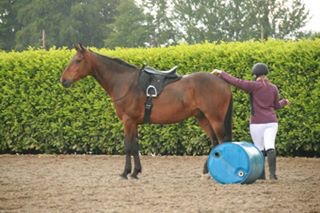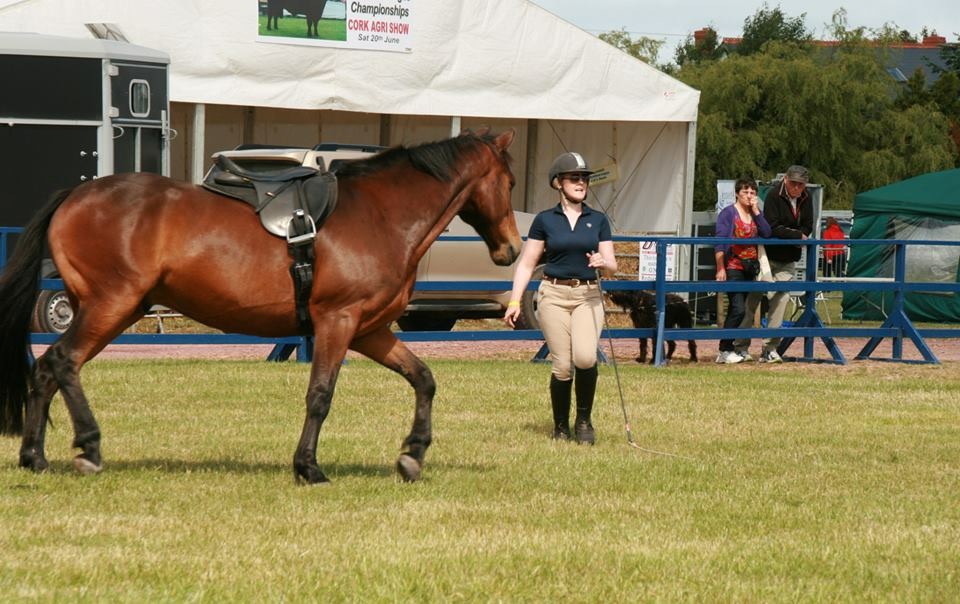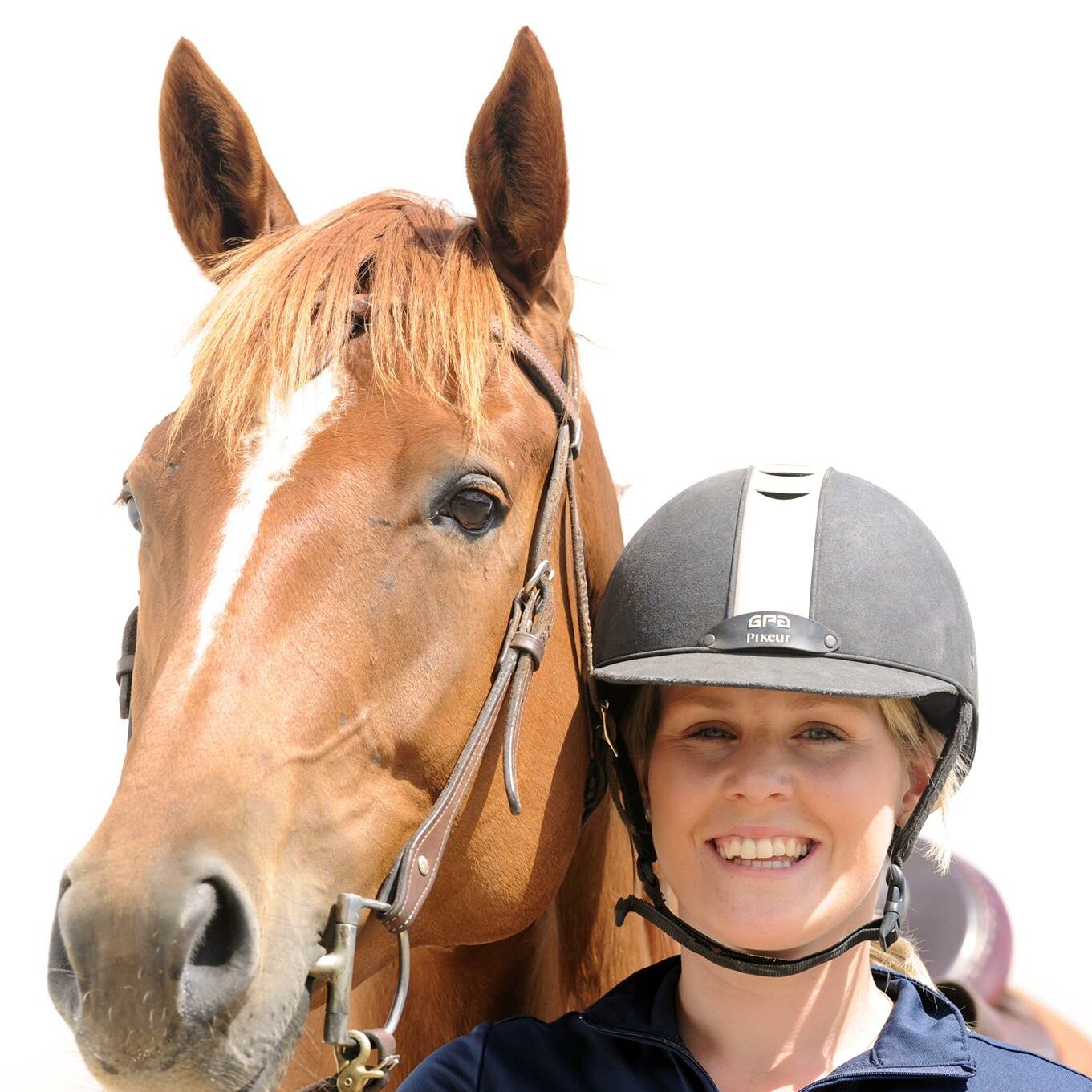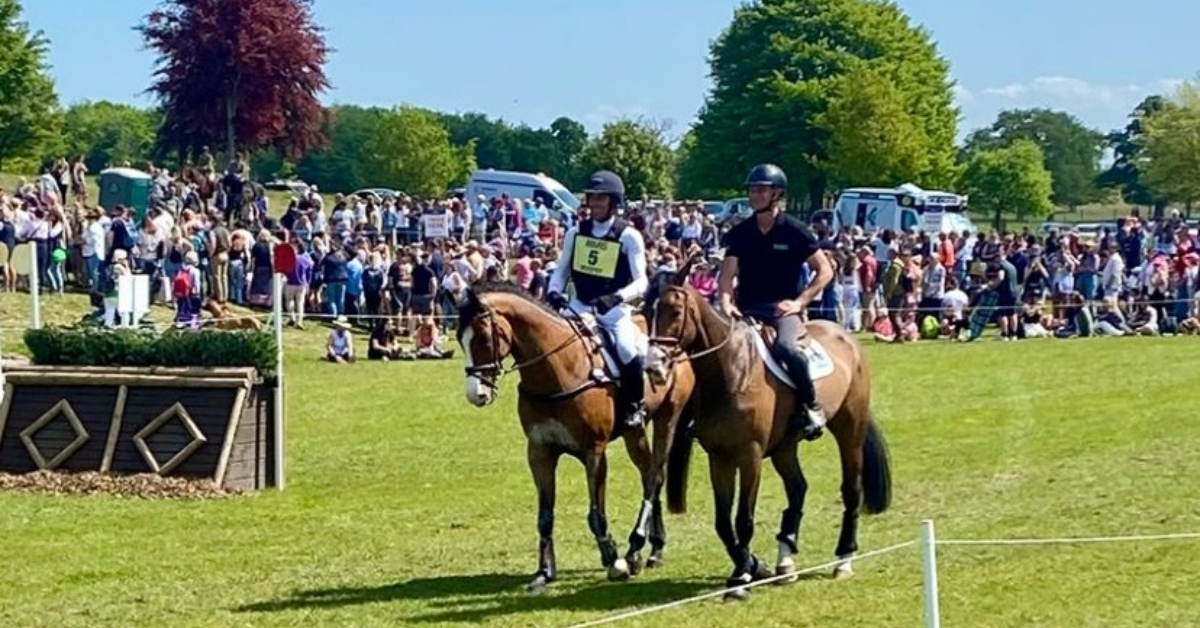Label – a classifying phrase or name applied to a person or thing, especially one that is inaccurate or restrictive.
As a professional educator I am passionate about all things educational psychology & learning theory, I love nothing more than reading up on these subject areas, writing about them & discussing them with my peers. However, if I’m not careful, I could be getting worse!
How could that happen?
The more I learn & the more I know the greater propensity I have to label my thoughts, experiences & interactions. Our brain is designed to classify, categorize & stereotype. It makes for a highly efficient processing system, but it also has its drawbacks in that we can often mis-judge, mis-label or miss the reality of the situation.
We use & hear so many labels on a daily basis to describe our horses, their recent performance or their character in general. The following list of common descriptors are worth thinking about, what do they actually tell us? What labels do you use & what do they mean to you?
| Good Bad Genuine Nasty Aggressive Dominant Bossy Sassy Spicy Bad Attitude Maresih Stallionish |
Behaviour is Feedback
When we label, we tend to lose our curiosity. My horse is lazy is a case closed type of definition, but when we are curious about their ‘laziness’ we may get closer to the root cause. Is it a motivation issue? Is it a physical issue? What could I do to break my horse’s assumptions about particular tasks? How could I get creative about solving this problem?
When it comes to behaviour, it may be more helpful to use descriptors rather than labels. Describing behaviour is more specific than labelling and communicates what you can actually see. When we view behaviour as feedback as opposed to a personal afront it helps to shift our mindset. Understanding the basics of behaviourism, can assist us in creating powerful learning experience for the equine learners in our care.

| Label | Behaviour |
| Kills Curiosity Is a Case Closed Approach Places Blame on the Horse Removes Responsibility from the Human | Focus on the Why Say What You See Helps to Break Behaviour Down into Pieces |
Counter Conditioning
We all know that it’s easier to install an attitude or behaviour than it is to take it out. When we try to change an attitude or behaviour, it’s known as counterconditioning.
Horses may have conditioned responses that helped them to escape feelings of pressure & overwhelm in the past, this is a type of learned behaviour or conditioning as opposed to something that a horse does with the same degree of consciousness as a human would. Behaviourally what worked successfully in the past tends to be drawn on again & again.
When a horse learns a behaviour such as bucking or rearing it has the desired effect for them in that it removes pressure, but for us it’s problematic in that we can easily be injured in these situations. This is where counter-conditioning comes into play the horse needs to be given other options & avenues in which to voice their opinion & present their feedback.
The Neuroscience Piece
The equine brain is engineered to navigate the equine world, where the best shade is on a sunny day, where the best grass is, is it safe to lie down? & so on. Their brains are not designed to interpret the human world & yet this is something we ask them to do almost every day (Jones, 2020).
Horses are hard wired for safety & the following fears are ones that particularly concern them;
(Jones, 2020)

Understanding the Nervous System
Much like humans the equine nervous system can be broken into two distinct branches.
When a horse becomes overly sympathetically aroused learning opportunities are lost & we lose connection with our equine partners. In these situations, we need to retreat, pause & allow the nervous system to regulate itself. When regulation has occurred, we can try again, by making the task easier or slowing the pace.
Having awareness of the autonomic nervous system & how it works does not mean that we never bring our horses outside of their comfort zone, quite the opposite in fact a degree of sympathetic arousal aids concentration & focus, it’s our job to find the sweet spot of ‘arousal’ where successful learning can occur (Peters & Black, 2012). The ideal learning environment is one that bring the horse just outside of its comfort range & not beyond it.
Horses do not have the brain capacity to choose to behave badly. Horses are however hardwired for safety & this strongly shapes their behavioural output. A horse’s primary concern is ‘Am I safe?’
The equine brain is both similar & dissimilar to the human brain. Horses have a frontal lobe but it in no way resembles the human frontal lobe, it is much smaller & less developed in equines. This frontal lobe of the brain is where we carry out our most complex thinking, where our ability to plan comes from & our ability to see cause & effect. The horse lacks the cognitive ability to have such thoughts as ‘I know what this person wants me to do, but I don’t feel like it today.’ (Peters & Black, 2012).
Furthermore when we discuss emotion in horses we define it as a mental state arising spontaneously rather than arising through a conscious effort (Peters & Black, 2012). Emotions in horses tend to be more primitive & instinctual. It’s not a case of being smarter or dumber it’s simply a case of understanding that we are just different from each other.
Thresholds
Horses just like humans have confidence thresholds, the juncture at which they start to react to stimuli & feel stressed by the experience. We must observe the horse’s confidence thresholds, acknowledge them, permit them & allow ourselves to be curious about them. When we allow our horses to retreat from things they fear it not only builds their sense of safety, but increases their trust in us. Even just allowing a pause can give the horse enough time to process the situation & understand what is being asked.
Additionally, we need to acknowledge our own thresholds & recognise when we are beyond of emotional window of tolerance, when we repeatedly push past thresholds we erode both horse & human confidence. This is one of the most common presentations I see in both my horse & human practice.
My Swimming Experience
Many years ago, when taking swimming lessons with three broken fingers my instructor asked me to jump into the pool, I didn’t feel overly confident about it on account of having three broken fingers. The instructor said if I didn’t jump that I would be pushed, I instantly started reversing away from the instructor & the pool, all confidence in myself & my instructor was immediately lost. I often think that this is how horses must feel when they feel like they really can’t do something. When we push past thresholds of confidence this has a hugely negative impact on the equine human relationship. It’s really hard to learn when you don’t feel safe.
Ethical Considerations
Our industry is at the stage where we need to prioritize ethical training & welfare issues if we want to continue to engage with horses in domesticity as we currently do. At present we have societal acceptance to ride horses, but justification is not static. The best way to ensure future acceptance is to root ourselves in evidence-based practices that serve & understand the needs of the equine athlete.
How Can I Help My Horse to Learn?
| Example: Your horse is always rushing through transitions from trot to canter, ask your horse to transition from trot to canter then ask them to come back to a walk. This can have the impact of changing the horse’s thought process about the transition. When the exercise is established they are going with slowing down or stopping in mind rather than going with going in mind. It’s also worth remembering that tension tends to travel up through the gaits with your horse & can result in an explosion in a canter or gallop, as the horse no longer has the emotional fitness to hold themselves together. In that case the tension needs to be addressed in the lower gaits first. When we prioritize relaxation in our training it has a hugely positive impact on our working relationship. Many of these issues are much easier to address on the ground first & then under saddle. |
Conclusion
Understanding a little about learning theory & equine psychology can make your life & your horse’s so much easier. The good news is that this is only the beginning of a new revolution of horsemanship that is informed by cutting edge research & proven best practice.
References
Jones, J., (2020) ‘Horse Brain, Human Brain: The Neuroscience of Horsemanship’ London: Trafalgar Square.Peters, S., & Black, M. (2012) ‘Evidence Based Horsemanship’ USA: Wasteland Press.


Share
Your subscription is 100% Free for our first year, No credit card details required.

The Judging Concerns That Keep Coming Back — And Why They Can’t Be Ignored Anymore We didn’t make it to

There are few sporting events that live up to the hype. Wimbledon? Too many strawberries. Cheltenham? Too many suits. But

British Veterinary Association publishes full response to Competition and Markets Authority’s proposed remedies for veterinary market for household pets. The